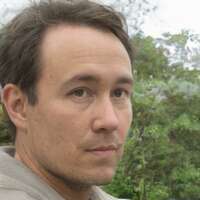Radiology is a vital branch of medicine that helps physicians to diagnose and treat injuries and illnesses. This field heavily relies on imaging techniques such as X-rays, computed tomography, ultrasounds, fluoroscopy, and nuclear medicine. Radiologists are medical doctors who specialize in interpreting these images to make accurate diagnoses.
After completing an undergraduate degree,radiologists must attend medical school and then enroll in a radiology residency program. These programs usually last four years and provide training in all aspects of diagnostic imaging. Upon completion of their residency, radiologists may choose to subspecialize in a particular area of radiology such as pediatrics, interventional radiology, or MRI.
UCLA David Geffen School of Medicine
The Department of Radiological Sciences four-year diagnostic radiology trainign programme at the David Geffen School of Medicine is excellent. This program offers residents an extensive array of diagnostic radiology skills,including image reading and interpretation. Each week, residents take part in lectures and conferences that go over every aspect of radiological science. The residency training program involves rotations through the five associated teaching hospitals. This ensures that they gain exposure to a variety of patients and clinical settings.
The UCLA Diagnostic Radiology Residency Program currently has 48 residency positions available at its affiliated hospitals. Candidates for the program are selected based on their academic achievement, personal qualities, and letters of recommendation. Once accepted into the program, they complete a rigorous course of study that includes both didactic and clinical components.
The twelve subspecialty sections within the Department of Radiological Sciences provide training in a wide range of diagnostic radiology fields. The program provides a foundation in image interpretation and analysis from the first year. Radiological science is covered in full through weekly lectures and conferences that they also participate in. The residency training program involves rotations through the five associated teaching hospitals. This ensures that they gain exposure to a variety of patients and clinical settings.
Overall, the UCLA David Geffen School of Medicine offers an outstanding educational experience for those interested in pursuing a career in diagnostic radiology. The faculty is highly experienced and committed to providing residents with the best possible training. I would encourage anyone considering a career in this field to seriously consider applying to this program.
The University of Michigan's Medical School offers a -year radiology curriculum with rotations in
Rotation through abdominal, Thoracic, and Muscolskelatal Imaging is a part of the 4-year curriculum in Radiology. The Michigan Radiolgy Quality Collaborative is located at Michigan Medicine. The Vascular interventional Radiologic division provides specialized training with an increasing level of autonomy over a 6-year period, preparing residents with skillsets needed to match programs such as Breast Imaging, Muscoskelatal Radilogy, or Neuradoriography through the National Resident Matching Program.
Yale School of Medicine
If you're looking for a top-notch residency program in radiology, look no further than Yale School of Medicine. Yale, located in New Haven, CT, offers programs ranging from Diagnostic Radiography to Interventional Radiography, as well as Diagnostic Medical Physics. And with 68 resident positions available, you'll be able to get the training you need to become a leader in your field.
In your second year of residency, you'll receive clinical training through a process of being paired one-on-one with an attending physician. This will prepare you for your CORE exam in third year. In fourth year, you can take advantage of subspecialty electives to further hone your skills.
Yale's hospital system offers some of the best psychiatric, pediatric, and cancer treatment facilities in the country. So whatever area of radiology you're interested in pursuing, you'll have access to world-class training and facilities.
Washington University School of Medicine
The Mallinckrodt Institute of Radiology at Washington University School of Medicine in St. Louis offers tracks in Interventional Radiology, Diagnostic Imaging, and Nuclear Medicine. The four-year radiologist curriculum starts with the key rotations in the various radiology branches.
Seven research facilities at MIR make it a global leader in up-to-date radiological collaboration and inquiry. The fellowship programs offered include specialties such as pediatrics,radiology,andnuclearmedicine.
Washington University School of Medicine is one of the leading institutions for medical research, education, and patient care. With world-renowned faculty and state-of-the-art facilities, the school is at the forefront of advances in medicine.
Mallinckrodt Institute of Radiology is an integral part of the Washington University School of Medicine, providing cutting-edge imaging services and research. MIR boasts seven research facilities, making it a world-renowned hub for cutting-edge radiology collaboration and inquiry. MIR also offers four-year residencies in diagnostic radiology and nuclear medicine, as well as fellowships in eight different areas of subspecialties.
Whether you are a patient seeking expert care or a researcher looking for groundbreaking discoveries, Mallinckrodt Institute of Radiology at Washington University School of Medicine is your destination for excellence in imaging.
Duke University School of Medicine
Duke University is located in Durham, North Carolina. At Duke University School of Medicine, a five-year model that combines residency and fellowship is followed. There are 94 subspecialty faculty members at Duke University, and 19 care locations. Duke University offers a number of observer programs for visiting professionals, technologists, and continuing medical education.
The Duke University School of Medicine is one of the leading medical schools in the United States. Each year, the school trains hundreds of new doctors who go on to provide care for patients across the country.
The Duke University School of Medicine offers a unique five-year curriculum that combines residency training with fellowships. This approach allows students to gain experience in a wide range of specialties, from primary care to radiology.
There are 94 subspecialty faculty members at Duke University, making it one of the largest and most comprehensive medical schools in the country. In addition, there are 19 care locations throughout North Carolina where Duke students can learn and work.
Duke also offers a number of unique programs for visiting observership, technologist training, and continuing medical education. These programs allow students to gain valuable experience while working alongside some of the best doctors in the world.
Penn Radiology
If you want to study at a top-ranked institution while also participating in high-level research projects, the University of Pennsylvania's Perelman School of Medicine is a great option. The paths to leadership that Penn provides its residents include programs in business and innovation, radiology, and health equity leadership.
Radiology is one of the most important medical specialties, as it helps diagnose and treat a variety of conditions. At Penn, students can choose to focus on diagnostic radiology, interventional radiology, or radiation oncology. residency program offers exposure to all aspects of the field, from imaging to treatment planning.
Penn's radiology residency program is highly competitive, but those who are accepted will receive an excellent education and training. Residents will have the opportunity to work with some of the best doctors in the country and learn from leading researchers. If you are interested in a career in radiology, Penn is a great place to start your journey.
Baylor College of Medicine's Radiology Residency and Fellowship Programs
Baylor College of Medicine in Houston, Texas offers a diagnostic radiology residency, as well as fellowships in multiple pediatric specialty areas. Residents rotate through the renowned Texas Children’s Hospital during their training. The first year for radiology residents is focused on the basic foundation skills, while subsequent years allow for increasing levels of specialization and autonomy. All residents are required to publish at least one research article during their time in the program.
This prestigious program provides residents with an excellent education in all aspects of radiology. The faculty is composed of experienced radiologists who are dedicated to teaching the next generation of doctors. The curriculum is designed to give residents a strong foundation in medical imaging and diagnosis, so that they can go on to provide high-quality care to patients.
If you are interested in pursuing a career in radiology, then the Baylor College of Medicine's Radiology Residency and Fellowship Programs could be perfect for you.
UC San Francisco - Radiology
The University of California, San Francisco's Department of Radiology and Biomedical Imaging offers some of the best residency programs in the country. Students can choose from diagnostic radiology, interventional radiology, and nuclear medicine, and there are both graduate and postgraduate programs available. UCSF offers plenty of opportunities for residents to get involved in research projects involving radiological technologies. The first two years of the UCSF Medical School curriculum focuses on medical rotations, attending various lectures and medical conferences. However, during their third year, UCSF medical students also attend the Resident Review Course - one of the largest review courses in the nation. In addition to the benefits package, residents also receive a housing stipend to help offset the costs associated with living in San Francisco.
Harvard Medical School's Radiology Residency Program
The radiology residency program at Harvard Medical School provides residents with instruction through clinical activities, case discussion conferences, lectures, andsub specialty conferrences. At Grand Rounds on Wednesdays, prominent radiologists from across the nation present. Subspecialty areas host conferences on a weekly basis.
Residents can take advantage of professional opportunities like the MESH Incubator lab, the Management and Leadership Training Program, and projects offered through Global Health Programs. These opportunities provide residents with invaluable experience that will help them succeed in their careers as radiologists.
The program is highly competitive, but those who are lucky enough to be accepted into it will receive an excellent education that will prepare them for a successful career in radiology.
Johns Hopkins University School of Medicine
Johns Hopkins University School of Medicine is located in Baltimore, MD. The school offers a variety of residencies including: diagnostics,nuclear medicince,moluar imagning,and intervention. Johns Hopkins has a billion-dollar clinical building that is state of the art. Johns Hopkins residents are required to complete a scholarly project before graduating.
The Johns Hopkins Department of Radiology is committed to providing outstanding patient care, conducting leading-edge research, and training the next generation of leaders in the field of radiology.
Radiology residents can specialize in areas such as diagnostics,nuclear medicine, molecular imaging, and interventional radiology. Our residency programs are designed to provide residents with a well-rounded education that will prepare them for a successful career in any area of radiology.
The Department of Radiology also offers fellowships in many subspecialty areas of radiology, including breast imaging, cardiovascular imaging, gastrointestinal imaging, genitouriinary imaging, musculoskeletal imaging, neuroradiology, and nuclear medicine. Fellowships offer advanced training in a particular subspecialty area and provide an opportunity to develop expertise in that area.
Johns Hopkins has a long tradition of excellence in research and teaching. The department is home to many world-renowned researchers who are leaders in their fields. The department's research programs are highly respected and funded by major granting agencies such as the National Institutes of Health and the National Science Foundation. In addition, the department has an active teaching program that includes both didactic lectures and hands-on laboratory sessions.
Conclusion
If you're looking for an excellent radiology residency program, I highly recommend the ones at UCLA David Geffen School of Medicine and Duke University. The programs offered provide residents with a comprehensive education, preparing them for success in any area of radiology.


